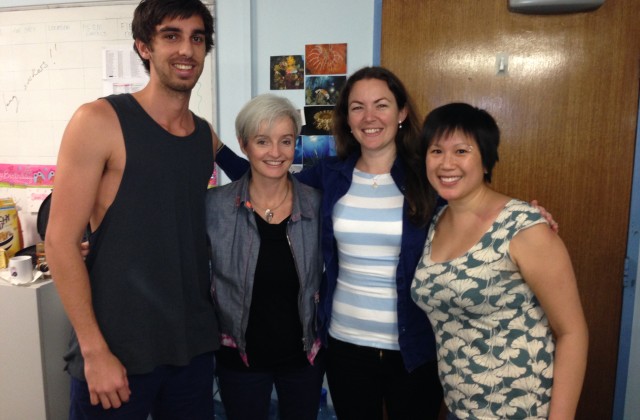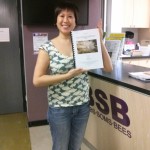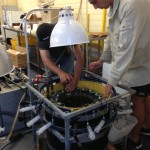Congratulations SEE lab Honours students
As of 12 noon today, our honours students will be released from their desk shackles and allowed back into the sunlight after 10 months hard work in the field and lab to produce excellent theses on a variety of topics. A wonderful achievement by all.
Aria Lee – Reproductive strategy and gamete development in an invasive fanworm, Sabella spallanzanii at Gulf St Vincent, South Australia.
Abstract:
Tyson Haddad – A manipulative field experiment to measure the effects of organic enrichment on soft sediment ecosystem functioning and structure.
Abstract:
Environmental monitoring studies have frequently focused on understanding changes in community structure as a result of human activities, but the functional consequences of these changes are poorly understood. Organic enrichment associated with anthropogenic sources has the potential to significantly alter the structure of soft-sediment communities and this has been largely documented in observational studies. However, few studies have implemented manipulative field experiments and fewer still have considered both the effect of organic enrichment on benthic community composition and the associated changes to important ecosystem functions such as productivity and nutrient cycling. Benthic recruitment containers were deployed in a six-week manipulative field experiment to investigate changes to benthic community functioning over time as a result of organic enrichment. Community respiration increased in enriched sediments while primary productivity was reduced. Developing communities also exhibited changes to important biogeochemical processes through time, including shifts between aerobic and
anaerobic respiration as a response to enrichment. Sediment-water nutrient fluxes also differed in response to enrichment. Functional changes were assessed with respect to a biological endpoint; the infaunal community structure at the end of the six-week deployment. Organic enrichment significantly increased infaunal abundances and biomass and the polychaete family of Capitellidae was the most successful colonisers, representing > 90 % of the total abundance of enriched sediment communities. These findings suggest that there are not only significant
consequences for community structure, but also for respiration, productivity and nutrient cycling in estuarine ecosystems significantly enriched by human induced changes in organic loadings.



